Background: In Saudi Arabia (SA), diabetes is the most challenging health problem, its prevalence is 18.5%, and ministry of health (MOH) reported that 2.7 times increase in its incidence in less than two decades, which increases diabetic complication (DC) and its medical costs. Diabetic onset and its complications can be reduced through healthy lifestyle modifications. Therefore, this study was conducted among Saudi adult diabetic type II patients T2DM in Riyadh Primary Health Care Centres PHCCs in 2019; to determine the prevalence of the DCs, to study or assess the risk factors of DC, and to study the relationship between DC and the sociodemographic characteristics.
Methodology: We conduct this cross-sectional study among males with T2DM who was attending primary health care centers in Riyadh. We collected the data by face-to-face interview and from patient medical records for the one-month period. Sociodemographic, risk factors, history of diabetes and diabetic complication data were collected. The data was statistically analyzed using Excel and SPSS.
Results: The number of cases includes in our study is 351 patients. The mean age of the studied patients was 61.25 years, and the majority of them were on the overweight and obese category 74.1%. the prevalence of DCs was 65.8%, and the prevalence of cardiovascular, peripheral neuropathy, ocular, psychological, diabetic foot complications, nephropathy and cerebrovascular were 47.3%, 41.9%, 30.2%, 7.7%, 7.4%, 3.1% and 2.8% respectively. The most predisposing factor increasing the chance of DCs was the age group > 60 years, smoking, physical inactivity, elevated HbA1c level, uncontrolled blood pressure and the duration of DM.
Conclusion: The prevalence of chronic diabetes complications is high among Saudi male with T2DM. The diabetic complication can be reduced or delayed through increasing physical activity, cessation of smoking and by glycemic and blood pressure control.
diabetes mellitus, complications, Saudi Arabia, males
DC: Diabetic complication; IDF: International Diabetic Federation; SAMOH: Saudi Arabian Ministry of Health; DM: Diabetes Mellitus; T2DM: Type 2 Diabetes Mellitus; NCDs: Non-communicable diseases; USD: United State Dollar; SHIS: The Saudi Health Interview Survey; T1DM: Type 1 Diabetes Mellitus; T2DM: Type 2 Diabetes Mellitus; ECG: Electrocardiogram image; GDM: Gestational Diabetes Mellitus; OGTT: The Oral Glucose Tolerance Test; HbA1c: Hemoglobin A1C; TIA: Transit Ischemic Attack; UAE: United Arab Emirates; ESRD: End-Stage Renal Disease; WHO: World health organization; KSA: kingdom of Saudi Arabia; PHCS: Primary Health Care Centres; MOH: Ministry of health; IRB: Institutional Review Board; KFMC: King Fahad Medical City; AMP: Amputation; BP: Blood pressure; SPSS: Statistical Package for the Social Sciences; SD: Standard deviation; BMI: The mean body mass index; CI: Confidence interval.
Diabetes mellitus is a chronic metabolic disease of multiple etiologies [1,2]. Globally, diabetes is a growing public health problem and considers as the most common and costly chronic diseases which may lead to disability, decrease productivity and decrease life expectancy mainly after developing of chronic complication and consider as one of the top ten leading cause of death in the 21st century [3].
It's characterized by hyperglycemia resulting from defects in insulin secretion when the pancreas lost its ability to produce sufficient amount of insulin, or defect in insulin action by increase resistance to insulin action in the peripheral cells or both, associated with metabolism disturbance of carbohydrate, fat and protein [1].
In 2015, the non-communicable diseases NCDs accounting for around two-thirds of global deaths [3]. The four major non-communicable diseases Diabetes, cardiovascular disease, cancer and respiratory disease all together account for more than eighty percent of all non-communicable disease deaths [3].
The diabetes prevalence among adults has doubled worldwide, from 4.7% to 8.5% between 1980 to 2014 respectively, which shows a rapid spread of the disease [4]. In 2017, the total number of adults who suffer from diabetes worldwide was around four hundred fifty-one million, this is account for 8.7% of an adult population all over the world resulting in 727 billion USD spending globally for the care of adult's diabetic [3].
Saudi Arabian Ministry of Health SAMOH reported approximately 0.9 million persons were diagnosed with diabetes in 1992, but this figure rose to 2.5 million in 2010 [5]. While in 2013, according to the Saudi Health Interview Survey SHIS, the diabetes prevalence was 14.8% and 11.7% for males and females, respectively [6]. Then in 2017, the international diabetic federation reported that the prevalence of diabetes among Saudi adult is 18.5% [3].
Diabetes has three common types: Type 1 Diabetes Mellitus T1DM, Type 2 Diabetes Mellitus T2DM and Gestational Diabetes Mellitus GDM [7]. Type 2 DM or insulin resistance type is the most familiar form of diabetes account for 90-95% of all diabetic cases [7]. It is a multifactorial disease, including genetic and environmental risk factors [8]. The increment of the environmental risk factors like obesity popularity of fast foods, smoking, hypertension, hyperlipidemia and sedentary lifestyles physical inactivity may explain recent increases in the prevalence of T2DM [8].
The symptoms of type 2 DM develop slowly over the years and include: polyuria, polydipsia, polyphagia, blurred of vision, numbness or tingling sensation in extremity, unexplained weight loss, fatigue and delayed wound healing [9]. Diabetes can be diagnosed if fasting blood glucose concentration ≥ 126 mg/dL or random blood glucose concentration ≥ 200 mg/dL [10]. Also, diabetes can diagnose if blood glucose concentration ≥ 200 mg/dL in the oral glucose tolerance test OGTT after 2 hours of receiving 75 grams of sugar [10] (Figure 1).
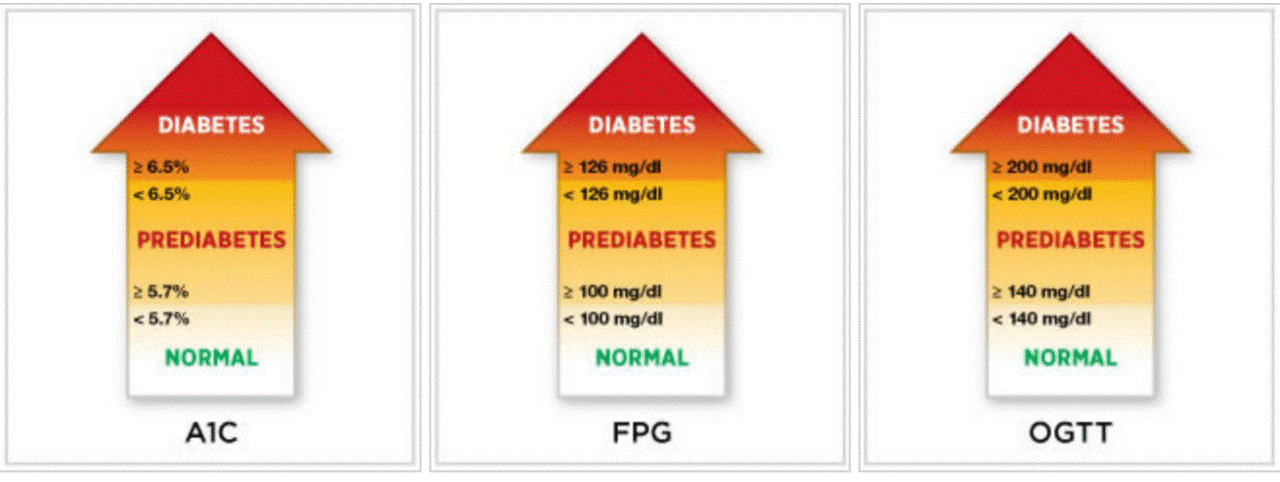
Figure 1. To diagnosis the prediabetes and diabetes according to HbA1c, fasting blood glucose and oral glucose tolerance test (10)
The haemoglobin A1C of ≥ 6.5% can diagnose diabetes, but this test is not recommended for diagnosis, although the haemoglobin A1C is the best way to follow up diabetic patients as it gives a picture of the average blood glucose for the past 2 to 3 months [10].
Diabetic complications DC may develop over time if not sticking to the treatment regimen [11]. This complication includes heart disease, cerebrovascular disease, renal problem, retinopathy, psychological complication and peripheral nerve damage diabetic foot problems, oral complication and sexual problem [11,12].
The diabetic complication DC occurs with uncontrolled blood sugar that leads to accumulation of blood glucose and fat cells in the wall of blood vessels, this accumulation leads to narrowing and even blockage of the vessels and ended by decrease blood and oxygen supply to the body organs: heart, brain, kidney, eyes, and peripheral nerves [13].
The prevalence of diabetic Coronary heart disease among type 2 diabetes patients is 24.1% [14]. Cardiovascular complication like hypertension, angina, chronic heart failure and myocardial infarction, increase the risk of death 2-3 times compared with diabetic patients without it [14]. Cardiovascular complications share some risk factors with diabetes include smoking, hypertension, hypercholesterolemia and obesity [14].
The prevalence of diabetic cerebrovascular complications like Stroke and transit ischemic attack "TIA" was 3-5% in the United Arab Emirates UAE [15]. Diabetic cerebrovascular complication associated with poor outcome and even death in the diabetic patient, because of that, tight diabetic control may decrease it is incidence and prevent reoccurrence [16].
The prevalence of diabetic nephropathy was 4.16% [11]. In DN the kidney’s ability to filter the blood from waste decreases, this waste material accumulates in the kidney leads to renal impairment which may progress to end-stage renal disease ESRD if not treated [17]. Diabetic nephropathy is strongly associated with hypertension [18] So, controlling blood pressure plays a vital role in delaying the onset of diabetic kidney complications, although the optimal blood pressure to improve outcome is unknown [19].
The prevalence of diabetic retinopathy is 34.6% [20]. As a result of long-standing uncontrolled diabetes, the patient may develop an ocular complication diabetic retinopathy includes a blurring of vision, cataract and glaucoma [1]. Diabetes considers as the leading cause of adult blindness [21].
Diabetic neuropathy is the most frequent diabetic complication, 50% of diabetes having some neuropathy [22,23]. World health organization WHO classified diabetes as the most common cause of non-traumatic lower-limb amputation [1]. Diabetic neuropathy decreases the nerve ending sensation and increase the risk of small injury in the foot, and because of poor circulation, the healing is delayed and lead to forming a blister, ulcer or amputation of a leg, foot or toe [24].
Diabetic neuropathy considered as a major cause of impotence in diabetic men, it may lead to difficulty in keeping an erection [25]. Diabetic patients are more susceptible to have dental and gums problem, e.g. gingivitis and periodontitis, and this happens if the gums diminish and pull away from teeth that may lead to early teeth loss [26].
The psychiatric complication is common with uncontrolled T2DM [12]. These disorders include cognitive impairment, depression and anxiety [12]. The Saudi Health Interview Survey SHIS showed that type 2 diabetes increases the risk of developing Alzheimer's disease [6].
The cost of care and the need for hospital care for diabetic patients is increasing more after the onset of complications [27,28]. Patients can delay the onset of diabetes and its complications through changing lifestyle by eating a healthy diet and practice regular physical activity and decrease weight [29]. According to American diabetic association, the patient can decrease the risk of type 2 diabetes by 58%, by reducing their body weight by 7% or practice moderate-intensity exercise 30 minutes a day for five days a week [10].
Tobacco smoke increases the risk of developing T2DM and its complications [30]. The overall prevalence of current smoking is 21.5% among Saudi adult males [31]. Smoking cessation is one of the ways to prevent diabetic complication [30]. Maintained of normal blood pressure and normal blood cholesterol level can be beneficial in the prevention of diabetic complication [32].
Along with lifestyle changes: early detection of diabetes, attending the appointments regularly and getting routine screening test can play an essential role in the prevention or delayed the onset of the diabetic complication [3]. There are some routine screening laboratory tests that are mandatory to control blood glucose and prevent the complication of diabetes, and these tests include: measure blood pressure at every clinic visit, check hemoglobin A1C every six months, visit a dentist to check dental problems every six months [4].
Also, in the annual base, they should test urine and blood for check renal function, detailed eye exam, lipids profile test and electrocardiogram image ECG [4]. If the patient cannot control his blood sugar after following this rule, the healthcare provider may need to prescribed oral diabetes medicine or even insulin injection to control their blood sugar 33. Globally, 40% of patient with type 2 DM need to add oral hypoglycemic medication and other 40% need to use insulin regimen in their treatment plan [2].
Diabetes is the most challenging health problem facing the kingdom of Saudi Arabia KSA [34]. Saudi Arabian Ministry of Health reported that approximately 2.7 times increase in the diabetes incidence in less than two decades [35]. Due to this rapid increase, its complication also increases [36]. This will lead to a decrease in the quality of life and increase medical costs and complication [37].
Despite the efforts to prevent it is complications, the results remain unsatisfactory. So, it is very important to formulate the necessary policies and action plan to avoid risk factor and to developed implementing program to decrease the incidence of diabetic complication among Saudi adult males for following the Saudi Vision 2030 [38].
General objectives
To describe the prevalence of complications and comorbidity among Saudi male patient with type 2 diabetes who attended Riyadh primary health care centers in 2019.
Specific objectives
Among type 2 diabetic Saudi male patients in Riyadh Primary Health Care centres
- To determine the prevalence of diabetic complications DCs.
- To study the relationship between diabetic complication and sociodemographic characteristic and to study or assess the risk factors of DC.
Materials and methods
A Cross-sectional study was carried out among Primary Health Care Centers (PHCs), included all Type 2 diabetes male who registered in the Ministry of Health chronic disease clinics in Riyadh city. The selection criteria included: Saudi male patients with type 2 diabetes mellitus, an age of 18 years or above, patients who are attending chronic disease clinics in Riyadh PHCS and ready to participate as well as sign a consent form and the patients with a major mental or cognitive disorder will be excluded from the study.
Sample size
With the assumption that the prevalence of diabetic complication is 72.72% according to a published study done in Al Ahsa District of Saudi Arabia [11]. For achieving the confidence level of 95% according to the following formula.
n=z2p(1-p)/d2
We needed 305 persons. Then we will add 15% to overcome no response rate. To end with 351 persons.
Sample technique
The sampling was conducted in two stages. First stage: as the Riyadh city is divided into five regions central -east-west- south-north for our convenience as we have very limited time to end our project and for the staff limitation, two centres will be selected from each region with a total of 10 centres. Second stage: we collected the required sample size of 351 cases from 10 primary health care centres to represent the different geographical areas of Riyadh by taking the eligible consecutive sample to decrease the selection bias.
Data collection
The data was collected through an interview by the principal investigator and from patient medical records. Using a well-structured, pretested questionnaire after validated by six expertise composed four parts; First part sociodemographic age, gender, occupation, income, educational level, family history of diabetes, smoking status. Second parts risk factors for diabetic complications obesity, uncontrol blood sugar, hypertension, hypercholesterolemia and physical inactivity. Third parts the history of diabetes duration of diabetes, the status of diabetic control HbA1c level, type of treatment. Forth parts chronic complications of diabetes mellitus. It includes all chronic complication which developed after the proper diagnosis of T2DM. This chronic complication categorized as cardiovascular, cerebrovascular, ocular, nephropathy, peripheral neuropathy, psychological, diabetic foot, recurrent gingivitis, reproductive system infection, falling teeth early in life, skin and hair problems and diabetic sexual complications.
The cardiovascular complication includes hypertension, angina, chronic heart failure and myocardial infarction. The cerebrovascular conditions include stroke and transient ischemic attack TIA. The ocular lesions include retinopathy, cataract and blindness. Nephropathy involve microalbuminuria and macroalbuminuria, renal impairment, and renal failure. Peripheral neuropathy includes numbness, prickling or tingling sensation. Psychological complication involves depression, anxiety and Alzheimer's disease. And the diabetic foot problems include foot ulcers or amputation AMP.
Statistical analysis
The data was statistically analyzed using Excel and SPSS (version 27.0). Descriptive analysis was done by calculating means ± SD for quantitative data, frequency, and proportion for qualitative data. Data were analyzed in order to test the significance of differences using binary logistic regression.
Descriptive analysis
The number of study participants was 372 individuals. About 21 of them were excluded from the study analysis because of missing data. Resulted in 351 patients were included in the study analysis. The mean age of the study population is 61.25 years range: 39 – 95 years with a standard deviation of ± 10.892. About 56.4% of the participants in the study were in the age group > 60 years compared to the age group <60 years (Table1).
Table 1. Demographic characteristics of the study group (normal patients and patients with complication)
Participants with complication |
Participants with no complication |
Total
|
Variable Category |
P-value |
Variable |
Percent |
Number |
Percent |
Number |
Percent |
Number |
29.9% |
69 |
70% |
84 |
43.6% |
153 |
<60 years |
< 0.001 |
Age group |
70.1% |
162 |
30% |
36 |
56.4% |
198 |
>60 years |
13% |
30 |
8% |
1 |
8.8% |
31 |
Illiterate |
< 0.001 |
Educational Level |
32.5% |
75 |
18.3% |
22 |
27.6% |
97 |
Primary school (Reads and writes) |
34.2% |
79 |
37.5% |
45 |
35.3% |
124 |
Intermediate school |
14.7% |
34 |
29.2% |
35 |
19.7% |
69 |
Secondary school |
5.6% |
13 |
14.2% |
17 |
8.5% |
30 |
University and above |
0.4% |
1 |
4.2% |
5 |
1.7% |
6 |
Single |
< 0.004 |
Marital Status |
89.6% |
207 |
92.5% |
111 |
90.6% |
318 |
Married |
10% |
23 |
3.3% |
4 |
7.7% |
27 |
Divorced and Widowed |
0.4% |
1 |
0.8% |
1 |
6% |
2 |
Student |
< 0.001 |
Occupation |
35.9% |
83 |
18.3% |
22 |
29.9% |
105 |
Not employee |
40.7% |
94 |
28.3% |
34 |
36.5% |
128 |
Retired |
22.9% |
53 |
52.5% |
63 |
33% |
116 |
Employee |
43.7% |
101 |
25% |
30 |
37.3% |
131 |
< 5000 riyals per month |
< 0.003 |
Monthly Income |
38.1% |
88 |
50.8% |
61 |
42.5% |
149 |
5000-10000 riyals per month |
18.2% |
42 |
24.2% |
29 |
20.2% |
71 |
> 10000 riyals per month |
The level of education for the study subjects varied as 27.6%, 35.3% and 19.7% for primary, intermediate and secondary level respectively, compare with few numbers for Illiterate 8.8% and 8.5% for higher education University and above. Most of the study participants, 90.6% were married, 7.7% were divorced, and widowed and few of them 1.7% were single (Table1).
About the occupation 36.5% of the study participants were retired, 33% were employee, 29.9% were not an employee, and only 6% were students (Table 1). A 42.5% of study participants have monthly income of 5000-10000 riyals per month, 37.3% get < 5000 riyals per month, and 20.2% received > 10000 riyals per month (Table 1).
The majority of the study individuals, 68.1% had a positive family history of diabetes (Table 2). More than fifty percent of the study subjects 54.7% was not a smoker, 30.8% of them was a smoker and 14.5% were Ex-smoker (Table 2). Almost three-quarters of study participants, 74.1% do not practice physical exercise (Table 2). About 77.8% of the participants were on a diabetic diet (Table 2).
Table 2. Risk factors and anthropometrics measurement of the study group (normal patients and patients with complication)
Participants with complication |
Participants with no complication |
Total |
Variable Category |
P-value |
Variable |
Percent |
Number |
Percent |
Number |
Percent |
Number |
66.2% |
153 |
71.7% |
86 |
68.1% |
239 |
Yes |
< 0.288 |
Diabetes Family History |
33.8% |
78 |
28.3% |
34 |
31.9% |
112 |
No |
25.1% |
58 |
41.7% |
50 |
30.8% |
108 |
Yes |
< 0.069 |
Smoking Status |
17.7% |
41 |
8.3% |
10 |
14.5% |
51 |
Ex-smoker |
57.1% |
132 |
50% |
60 |
54.7% |
192 |
No |
84.4% |
195 |
54.2% |
65 |
74.1% |
260 |
No |
< 0.001 |
Physical Exercise |
15.6% |
36 |
45.8% |
55 |
25.9% |
91 |
Yes |
24.2% |
56 |
18.3% |
22 |
22.2% |
78 |
No |
< 0.207 |
Diet |
75.8% |
175 |
81.7% |
98 |
77.8% |
273 |
Yes |
16% |
37 |
20% |
24 |
17.4% |
61 |
Normal weight |
< 0.427 |
BMI Category |
42.4% |
98 |
45.8% |
55 |
43.6% |
153 |
Overweight |
31.6% |
73 |
28.3% |
34 |
30.5% |
107 |
Obesity first degree |
10% |
23 |
5.8% |
7 |
8.5% |
30 |
Obesity second degree and Morbid obesity |
49.8% |
115 |
62.5% |
75 |
54.1% |
190 |
Normal level (under control
< 7%) |
< 0.002 |
HbA1c Category |
50.2% |
116 |
37.5% |
45 |
45.9% |
161 |
Elevated (uncontrolled
> 7%) |
18.6% |
43 |
65.8% |
79 |
34.8% |
122 |
Controlled Blood Pressure |
< 0.001 |
Blood Pressure Category |
81.4% |
188 |
34.2% |
41 |
65.2% |
229 |
Un-Controlled Blood Pressure |
22.9% |
53 |
50.8% |
61 |
32.5% |
114 |
No |
< 0.001 |
Hyper-
cholesterolemia |
77.1% |
178 |
49.2% |
59 |
67.5% |
237 |
Yes |
15.6% |
36 |
21.7% |
26 |
17.7% |
62 |
Always |
< 0.247 |
Sticking of Medication Therapy |
84.4% |
195 |
78.3% |
94 |
82.3% |
289 |
Not always |
38.1% |
88 |
85% |
102 |
54.1% |
190 |
<10 years |
< 0.247 |
Since When You Were Diagnoses with Diabetes |
61.9% |
143 |
15% |
18 |
45.9% |
161 |
10 years and more |
The mean body mass index BMI of the study population is 28.809 kg\m2 range: 19.4 – 42.5 with a standard deviation of ± 4.3249. Mainly the BMI for the study participants was fall in an overweight category by 43.6%, following by obesity first-degree which accounts for 30.5%, normal weight with 17.4% and obesity second degree and morbid obesity with 8.5% (Table 2).
The mean of hemoglobin A1c HbA1c for the study participants is 7.628% range: 5.2 – 13.2 with a standard deviation of ± 1.2194. Almost half of the study participants were having controlled HbA1c with 54.1%, the rest of 45.9% having un-control HbA1c (Table 2). Two-thirds 65.2% of the study participants showed uncontrolled blood pressure, and almost one-third 34.8% of them has normal blood pressure (Table 2).
Hypercholesterolemia was found in 67.5% of the study participants (Table 2). A large proportion of the study subjects 82.3% were not in restrict sticking of medication therapy (Table 2). Almost 54.1% of the study subject having diabetes for <10 years compared with 45.9% who had diabetes for ten years and more (Table 2).
Prevalence of chronic complications
Overall, 65.8% of the study participants were suffering from diabetes mellitus complications. The overall prevalence of cardiovascular, cerebrovascular, ocular, nephropathy, peripheral neuropathy, psychological and diabetic foot complications were 47.3%, 2.8%, 30.2%, 3.1%, 41.9%, 7.7% and 7.4% respectively (Figure 2).
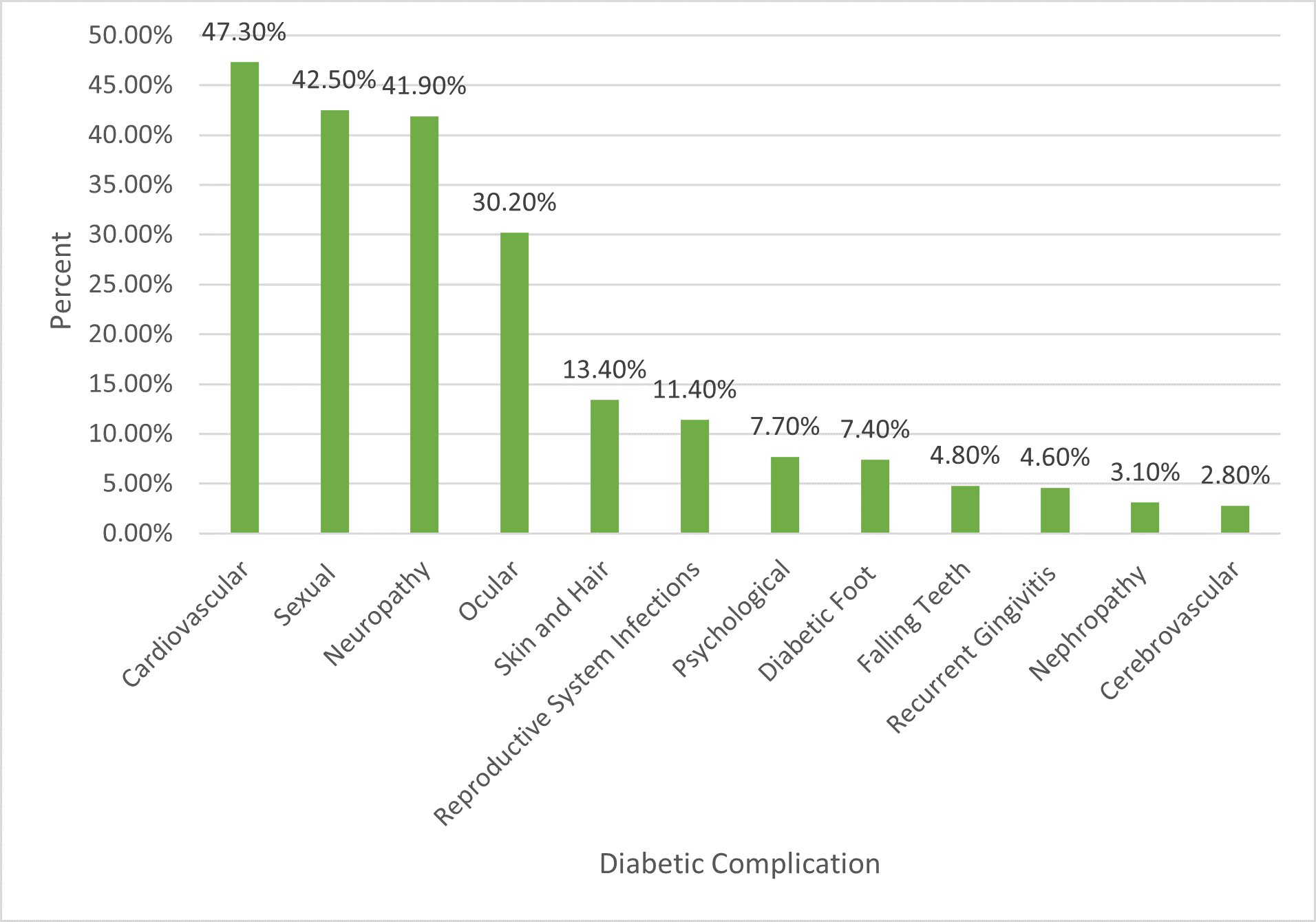
Figure 2. The percentage of participants who suffered from different chronic diabetic complications
The cardiovascular complications, which contained hypertension 76.51%, angina 0.6%, chronic heart failure 0.6% and hypertension with myocardial infarction 10.84% (Figure 3). The cerebrovascular complication which contained a stroke 50% and transient ischemic attack TIA 50% (Figure 4). The ocular complication which contained retinopathy 63.21%, cataract 31.13% and blindness 0.943% (Figure 5).
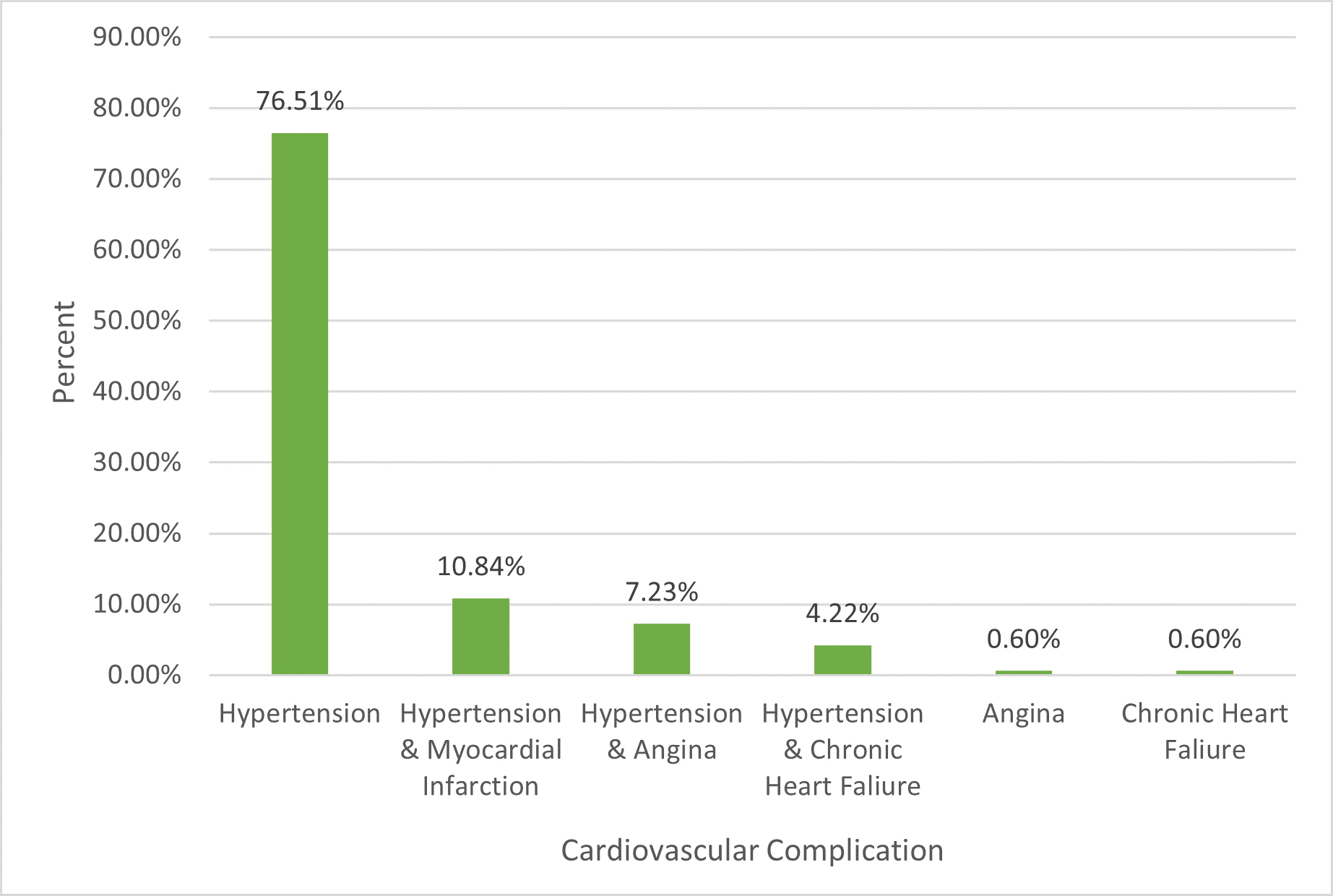
Figure 3. The percentage of participants who suffered from different categories of cardiovascular complication
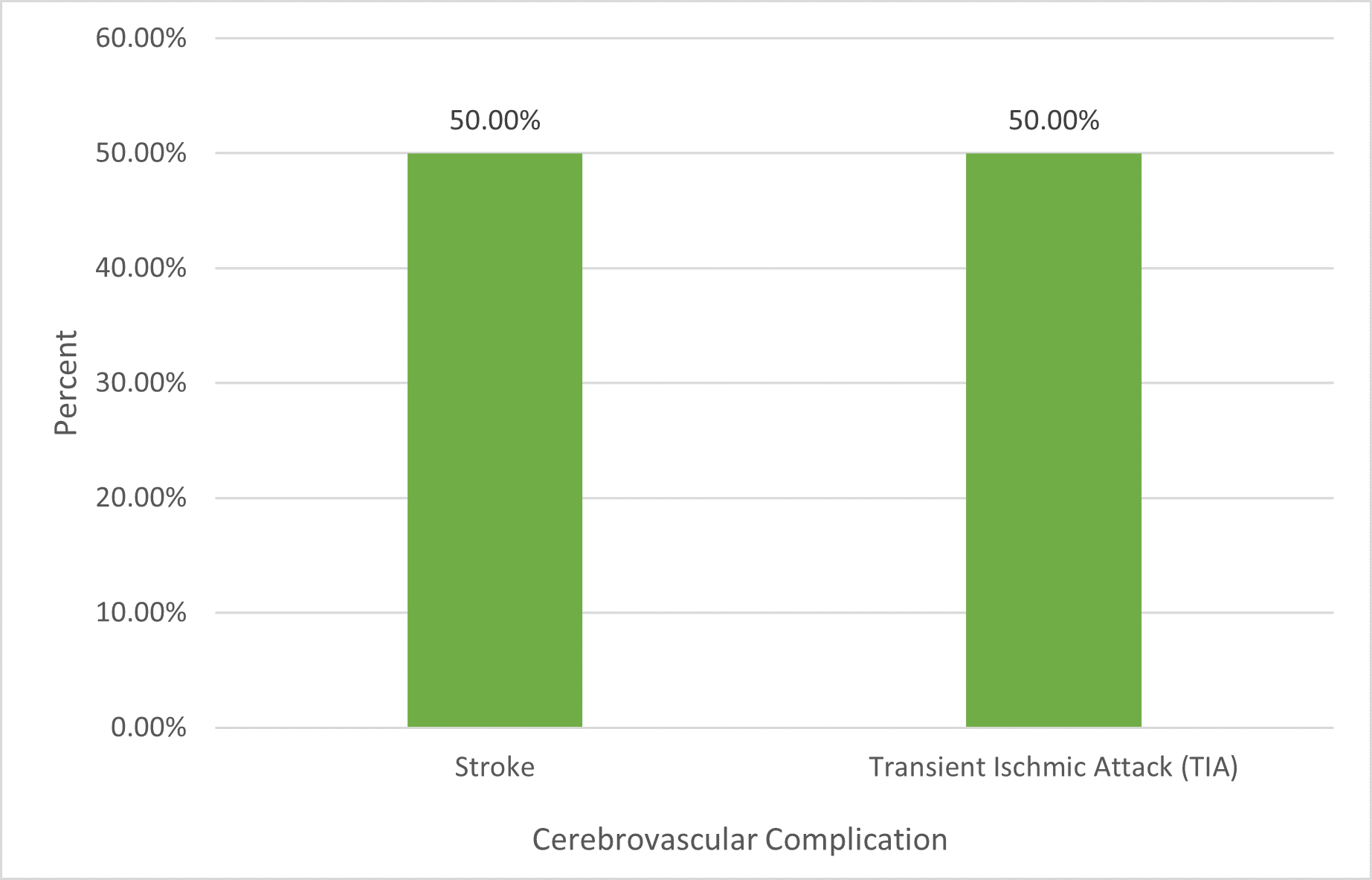
Figure 4. The percentage of participants who suffered from different categories of cerebrovascular complication
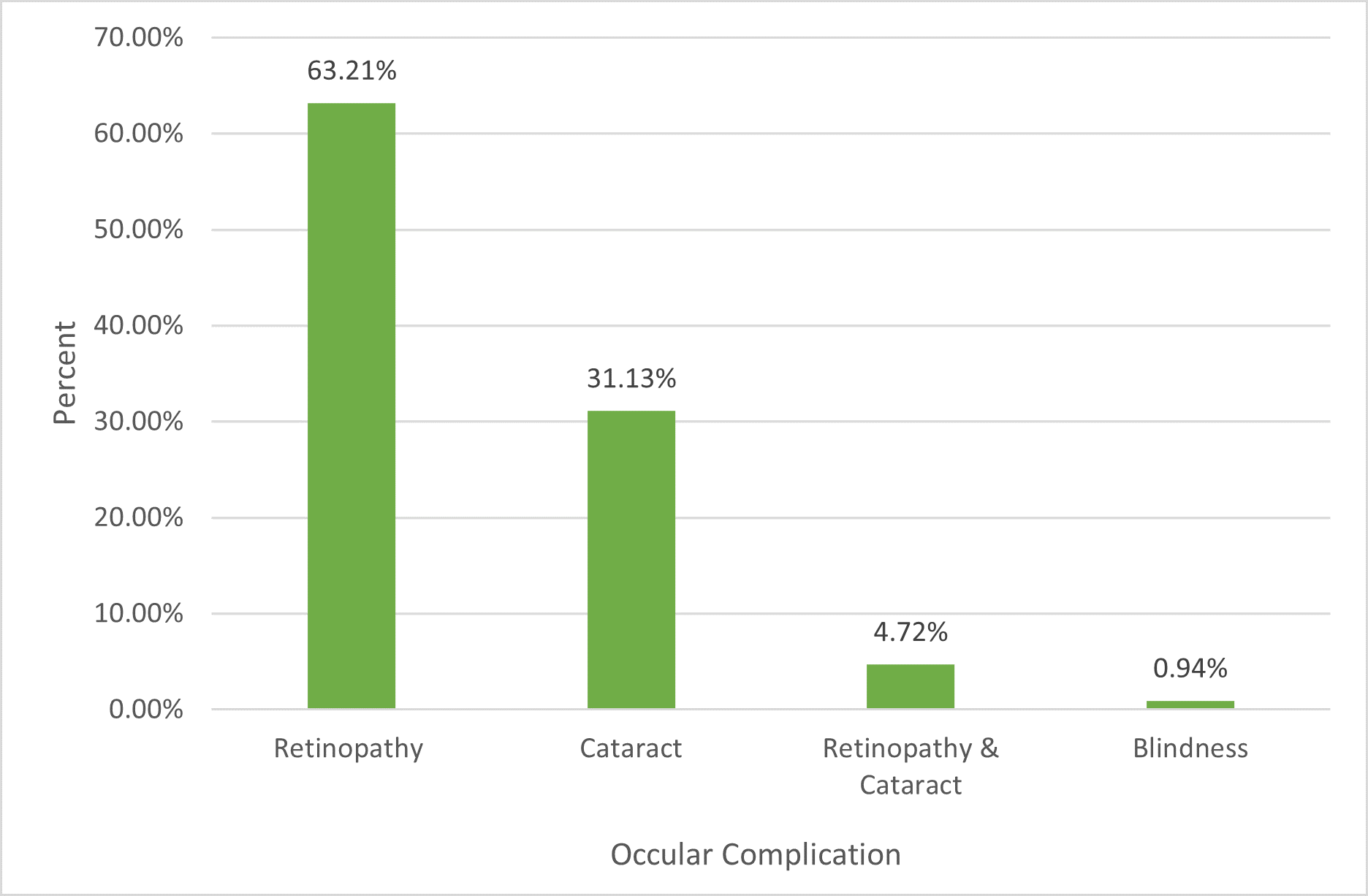
Figure 5. The percentage of participants who suffered from different categories of ocular complication
The renal complications which contained renal impairment 72.73% and renal failure 27.27% (Figure 6). The peripheral neuropathy complication, which included numbness 76.87% and prickling or tingling sensation 5.442% (Figure 7). The psychological complication which contained anxiety, depression and Alzheimer's disease with a prevalence of 37.04%, 29.63% and 29.63% respectively (Figure 8).
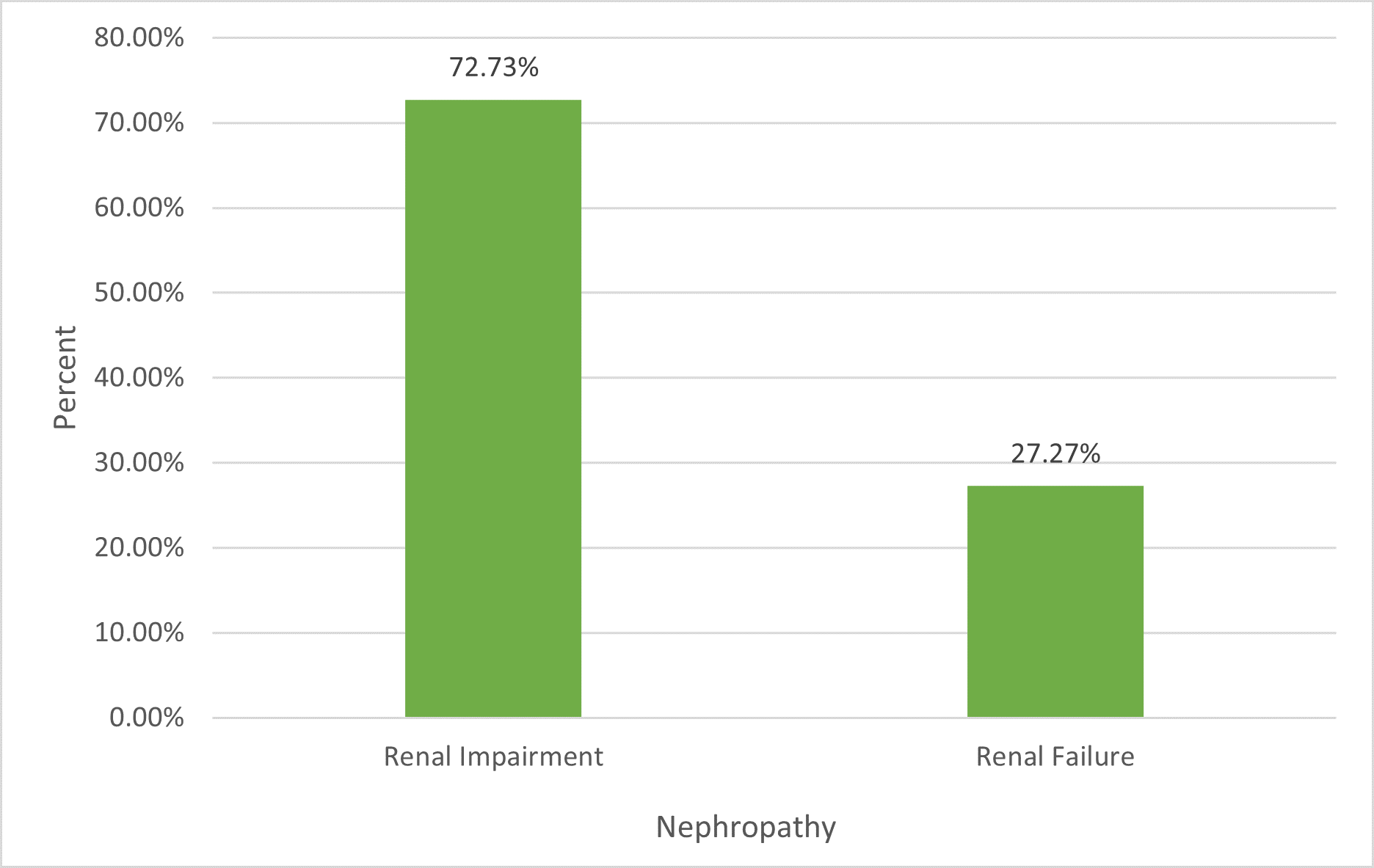
Figure 6. The percentage of participants who suffered from different categories of renal complication
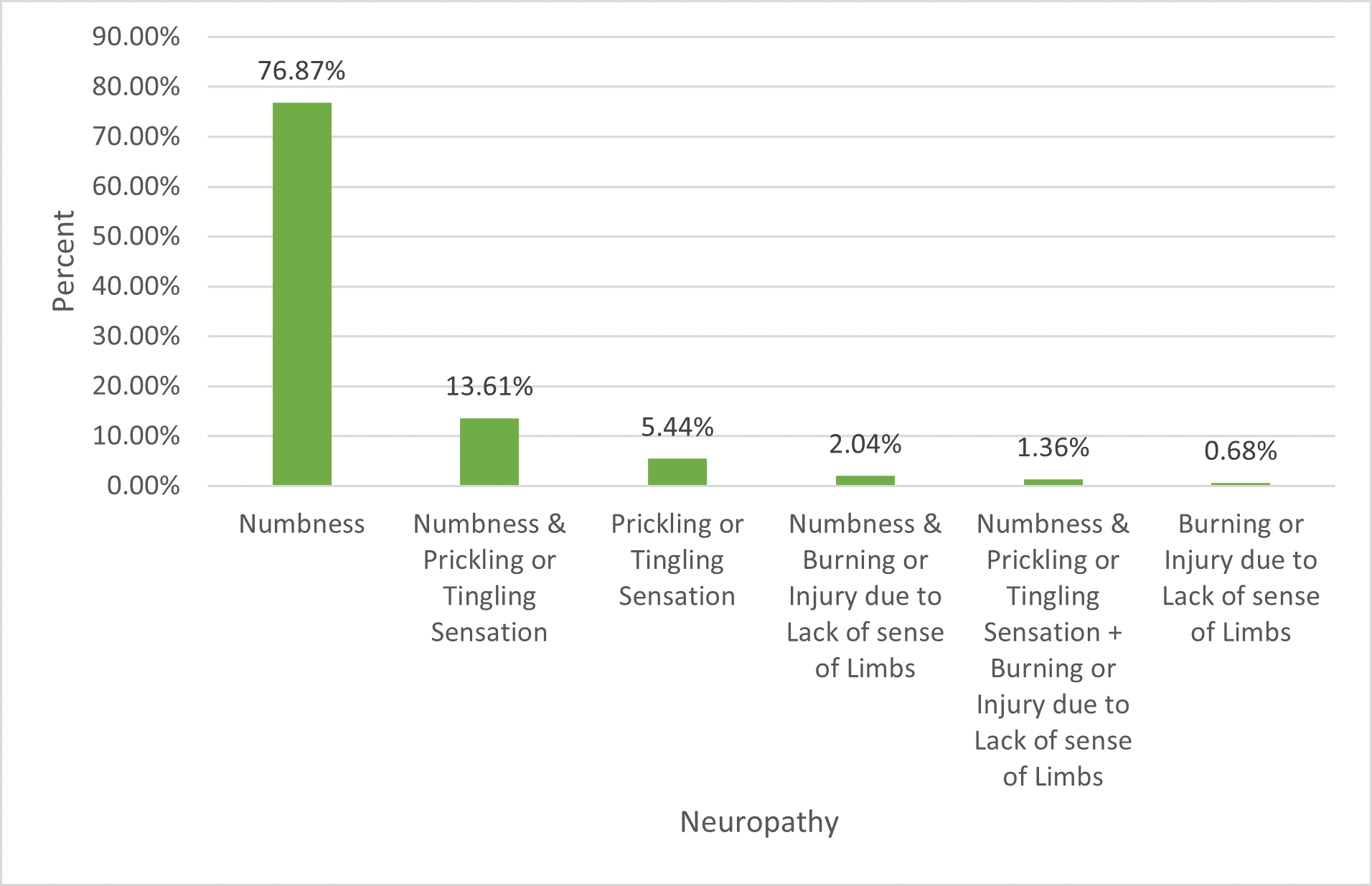
Figure 7. The percentage of participants who suffered from different categories of peripheral neuropathy complication
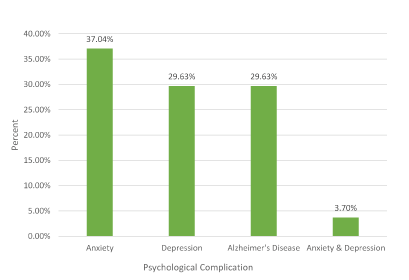
Figure 8. The percentage of participants who suffered from different categories of psychological complication
Diabetic foot complications consist of foot ulcer 69.23% and amputation 30.77% (Figure 9). And the prevalence of recurrent gingivitis, reproductive system infection, falling teeth early in life, skin and hair problems and diabetic sexual complications were 4.6%, 11.4%, 4.8%, 13.4% and 42.5% respectively (Figure 10).
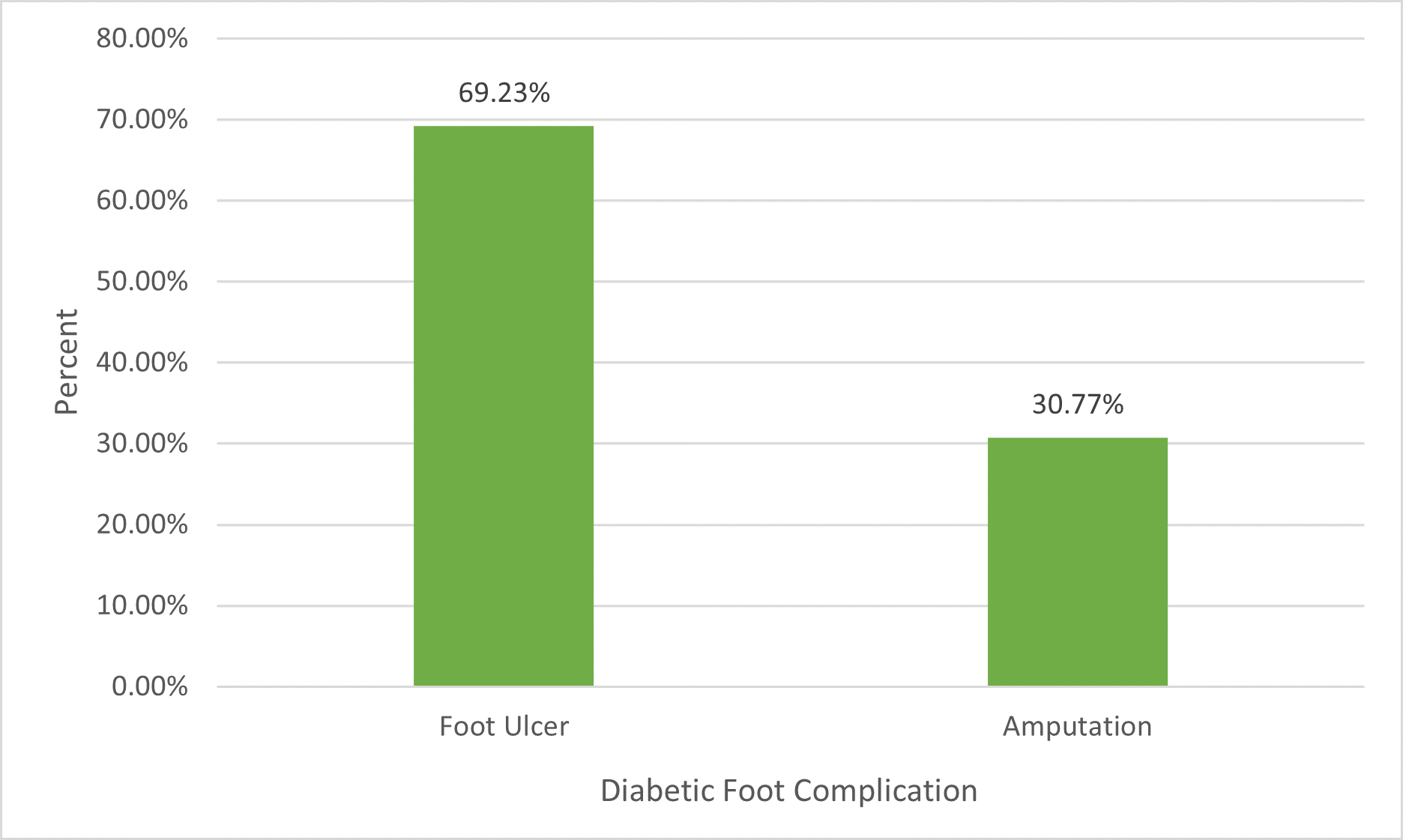
Figure 9. The percentage of participants who suffered from different categories of diabetic foot complication

Figure 10. The percentage of participants who suffered from different categories of complications
Analytic analysis
Regarding sociodemographic characteristic and to reach 95% confidence interval CI, it is appearing that the age group >60 years has odds ratio OR of 5.478 with 95%CI of 3.385 - 8.866, p< 0.001 which is significantly related to diabetic complication compare to the age group <60 years (Table 3).
Table 3. Unadjusted odd ratio of the participants demographic characteristics
Unadjusted |
Variable |
P-value |
(95%CI) |
OR |
Reference |
<60 years |
Age group |
< 0.001 |
(3.385 - 8.866) |
5.478 |
>60 years |
<0.001 |
(4.713 - 326.573) |
39.231 |
Illiterate |
Educational Level |
<0.001 |
(1.878 - 10.582) |
4.458 |
Primary school (Reads and writes) |
<0.044 |
(1.022 - 5.159) |
2.296 |
Intermediate school |
<0.587 |
(0.536 - 3.010) |
1.270 |
Secondary school |
Reference |
University and above |
Reference |
Single |
Marital Status |
<0.43 |
(1.076 - 80.802) |
9.324 |
Married |
<0.006 |
(2.621 -315.409) |
28.750 |
Divorced and Widowed |
<0.904 |
(0.073 - 19.465) |
1.189 |
Student |
Occupation |
<0.001 |
(2.473 - 8.133) |
4.485 |
Not employee |
<0.001 |
(1.923 - 5.617) |
3.286 |
Retired |
Reference |
Employee |
<0.008 |
(1.245 - 4.341) |
2.325 |
< 5000 riyals per month |
Monthly Income |
<0.989 |
(0.561 - 1.770) |
0.996 |
5000-10000 riyals per month |
Reference |
> 10000 riyals per month |
The prevalence of complication among the lower level of education was significantly higher than those with a high education level University and above. The illiterate level of education has OR of 39.231 with 95%CI of 4.713 - 326.573, p< 0.001, the primary level of education has OR of 4.458 with 95%CI of 1.878 - 10.582, p< 0.001 and the Intermediate level of education has OR of 2.296 with 95%CI of 1.022 - 5.159, p< 0.044 (Table 3).
About marital status, the divorced and widowed category has OR of 28.750 with 95%CI of 2.621 - 315.409, p< 0.006 which is significantly related to diabetic complication compare with the single marital status (Table 3). The retired has OR of 3.286 with 95%CI of 1.923 - 5.617, p< 0.001 and the unemployed has OR of 4.485 with 95% CI of 2.473 - 8.133, p< 0.001 which is statistically significant in relation to diabetic complication compare to the employee (Table 3).
The individual who takes < 5000 riyals per month as monthly income has OR of 2.325 with 95% CI of 1.245 - 4.341, p< 0.008 which has a significant relation to diabetic complication compare with the individual who receives > 10000 riyals per month (Table 3).
Regarding risk factor and anthropometric measurements, the individuals who did not practice physical exercise has OR of 4.583 with 95%CI of 2.765 - 7.597, p< 0.001 with a significant relation to diabetic complication compare with the individuals who practice physical exercise (Table 4).
Table 4. Unadjusted odd ratio of the participants risk factors and anthropometrics measurement
Unadjusted |
Variable |
P-value |
(95%CI) |
OR |
Reference |
Yes |
Diabetes Family History |
<0.289 |
(0.802 - 2.102) |
1.298 |
No |
<0.071 |
(0.958 – 2.875) |
1.660 |
Yes |
Smoking Status |
<0.088 |
(0.906 – 4.155) |
1.940 |
Ex-smoker |
Reference |
No |
<0.001 |
(2.765 - 7.597) |
4.583 |
No |
Physical Exercise |
Reference |
Yes |
Reference |
No |
Diet Status |
<0.208 |
(0.404 - 1.218) |
0.702 |
Yes |
Reference |
Normal weight |
BMI Category |
<0.642 |
(0.628 - 2.129) |
1.156 |
Overweight |
<0.322 |
(0.723 - 2.682) |
1.393 |
Obesity first degree |
<0.134 |
(0.792 - 5.735) |
2.131 |
Obesity second degree and Morbid obesity |
Reference |
Normal level (under control < 7%) |
HbA1c Category |
<0.024 |
(1.971 - 2.638) |
1.681 |
Elevated (uncontrolled > 7%) |
Reference |
Controlled blood pressure |
Blood Pressure Category |
<0.001 |
(5.099 - 13.918) |
8.424 |
Un-Controlled blood pressure |
Reference |
No |
hypercholesterolemia |
<0.001 |
(2.167 – 5.563) |
3.472 |
Yes |
Reference |
Always |
Sticking of Medication Therapy |
<0.158 |
(0.855 – 2.626) |
1.498 |
Not Always |
Reference |
<10 years |
Since When You Were Diagnoses with Diabetes |
<0.001 |
(5.223 – 16.235) |
9.208 |
10 years and more |
The participants who have uncontrolled HbA1c has OR of 1.681 with 95%CI of 1.971 - 2.638, p< 0.024 which is significant in relation to diabetic complication compare to the one who has normal HbA1c (Table 4). The diabetic complication has a significant relation to the study subjects with uncontrolled blood pressure with OR of 8.424 and 95%CI of 5.099 - 13.918, p< 0.001 in comparison with those with normal blood pressure (Table 4).
The study participants who suffer from hypercholesterolemia found to have a statistically significant relationship with a diabetic complication with OR of 3.472 and 95%CI of 2.167 – 5.563, p< 0.001 in comparison with those who did not have hypercholesterolemia (Table 4). The study subjects who have diabetes for ten years and more has OR of 9.208 and 95%CI of 5.223 – 16.235, p< 0.001 which is significant in relation to diabetic complication in compared with those who had diabetes for <10 years (Table 4).
Adjusted analytic analysis
After adjusting the analysis by age group, education level, marital status, occupation, monthly income, family history of diabetes, smoking status, physical exercise, diet, BMI, HbA1c, blood pressure, hypercholesterolemia, sticking of medication therapy and the duration of diabetes. The age group of >60 years has OR of 2.759 with 95%CI of 1.403 – 5.426, p< 0.003 which have a positive significant relation to diabetic complication in compare with age group <60 years (Table 5).
Table 5. Predictors of diabetic complication by Using backward LR binary logistic regression
Adjusted |
Variable |
P-value |
(95%CI) |
OR |
Reference |
<60 years |
Age group |
< 0.003 |
(1.403 – 5.426) |
2.759 |
>60 years |
<0.006 |
(1.345 – 5.616) |
2.748 |
Yes |
Smoking Status |
<0.164 |
(0.743 – 5.771) |
2.071 |
Ex-smoker |
Reference |
No |
<0.012 |
(1.199 - 4.463) |
2.313 |
No |
Physical Exercise |
Reference |
Yes |
Reference |
Normal level (under control < 7%) |
HbA1c Category |
<0.018 |
(1.132 - 3.851) |
2.088 |
Elevated (uncontrolled > 7%) |
Reference |
Controlled blood pressure |
Blood Pressure Category |
<0.001 |
(3.773 - 12.862) |
6.966 |
Un-Controlled blood pressure |
|
|
Reference |
<10 years |
Since When You Were Diagnoses with Diabetes |
<0.001 |
(2.761 – 11.942) |
5.743 |
10 years and more |
The diabetic complication has a significant relationship with a smoker with OR of 2.748 95%CI of 1.345 – 5.616, p< 0.006 in compare with a non-smoker (Table 5). The individuals who did not practice physical exercise are more able to develop a diabetic complication with OR of 2.313 and 95%CI of 1.199 - 4.463, p< 0.012 in comparison with those who practice physical exercise (Table 5).
The study participants who suffer from elevated HbA1c level has a significant relationship with a diabetic complication with OR of 2.088 and 95% CI of 1.132 - 3.851, p< 0.018 in comparison with those with normal HbA1c level (Table 5). Uncontrolled blood pressure has a significant relationship with a diabetic complication with OR of 6.966 and 95%CI of 3.773 - 12.862, p< 0.001 comparing with normal blood pressure (Table 5).
The study participants who had diabetes for ten years and more are more able to develop a diabetic complication with OR of 5.743 and 95% CI of 2.761 – 11.942, p< 0.001 in comparison with those who having diabetes for <10 years (Table 5).
The diabetes mellitus is having significant relation with the morbidity and mortality of the affected person through its complications, which may lead to a high burden on the health care system [39]. It is essential to know the local epidemiology of diabetes and the prevalence of its complication and compare it with the universal prevalence to formulating the additional policies and action plan [40].
This study conducted in Riyadh city in Saudi Arabia among adult male who suffering from T2DM and attending Riyadh PHCCS.
The overall prevalence of diabetic complication in our study is 65.8% which is a little bit less than the prevalence of diabetic complication in other study done in Al Ahsa district of Saudi Arabia because in Al Ahsa study they included both gender and the females were more able to get cardiovascular complication [11]. The prevalence of cardiovascular complication is 47.3%, which is more than the prevalence in a study conducted in Sub-Saharan Africa, this because of sedentary lifestyle and popularity of fast food in Saudi Arabia [14].
In the study conducted in the United Arab Emirates, the prevalence of diabetic cerebrovascular complication was 3.5%, which is almost similar to our study [16].
According to a systematic review the prevalence of diabetic retinopathy was 34.6% which is similar to that found in this study [21].
Diabetic nephropathy is found in 3.1% of the study participants which is less than other published study because the microalbuminuria and the macroalbuminuria is not assessed in our study as it not available in PHCCS in Riyadh city [11]. The prevalence of peripheral neuropathy is 41.9%, which is a little bit less than the prevalence found in a published cohort study [23]. For the diabetic foot complication, the prevalence is 7.4% which is less than other published study in Santo Domingo because in Santo Domingo they found female gender has statistically significant associations with peripheral arterial disease and the females were not included in our study [24].
In a cross-sectional study conducted in Pakistan they found the prevalence of erectile dysfunction was 62.5% which is high compared with our study 42.5%, two reasons may explain this difference first one as the medical care and facility is more developed in Saudi Arabia compared to Pakistan or because of underreporting explained by shameful feeling from some men [25]. After adjusted this variable age group, smoking status, physical exercise, HbA1c Category, blood pressure category and the duration of DM it remained statistically significant.
A significant relationship found between diabetic complication and the participants with age group of >60 years, and this is similar to a cross-sectional study published in the United Arab Emirates [16]. Smoking is strongly associated with diabetic complication, which is identical to the cross-sectional study conducted in Santo Domingo [24].
The diabetic complication has a significant relationship with being physically inactive, and this is similar to another study that was conducted in Saudi Arabia [8]. Poor control HbA1c increase the chance to develop diabetic complication to the double, which is similar to the result of another published study [16]. Un-Controlled blood pressure has 6.9 folds increase the chance of diabetic complication, which is identical to another study conducted in Al Ahsa district of Saudi Arabia [11].
Long duration ten years and more of being affected with diabetes has 5.7 folds increase the chance of diabetic complication, this is similar to another survey which conducted in Saudi Arabia [8].
Unfortunately, obesity is not statistically significant, and the reason for that may be due to the BMI were collected from the records and this increase the chance of record bias. This study conducted only in primary health care centers in Riyadh City, hospitals and private polyclinics were not included. So, the result may not be represented to the whole of the kingdom of Saudi Arabia. Only male gender was included in the study because of a cultural issue. We select the sample by non-probability technique and to decrease the selection bias and the eligible consecutive sample techniques were used. Another limitation some of the data BMI and HbA1c were collected from the patient's records, which increase the chance of record bias.
Strength is the concentrate on the diabetic complications, and the selection of the participants was collected from the whole Riyadh City to be represensive to the study community.
The prevalence of chronic diabetes complications is high among Saudi male with T2DM. Age group > 60 years, smoking, physical inactivity, elevated HbA1c level, uncontrolled blood pressure and the duration of DM were considered as the most predisposing factor for increasing the chance to develop a diabetic complication. The diabetic complications can be reduced or delayed through increasing physical activity, cessation of smoking, glycemic and blood pressure control.
Increase community awareness about diabetic complication and the way of its prevention. Strengthen screening to detect the prediabetes stage as the early diagnoses and appropriate treatment play a role in the delay of diabetic complication. Healthy lifestyle modification plays an essential role in preventing diabetic complication.
First, I would like to thank God for giving me the strength to carry out this work. I would like to thank all of my colleagues in the directorate of health affairs department of non-communicable disease in Riyadh and the ones who work in Riyadh PHCCS for their support and facilitated of my fieldwork
None
Ethical considerations as obtained as per MOH rules. The questionnaire contains no embarrassing or sensitive questions. Confidentiality was ensured by keeping the collected data secured and used only for the study purpose. An Institutional Review Board IRB was obtained from King Fahad Medical City KFMC.
The research is self-funded.
- Diabetes (2019) https://www.who.int/news-room/fact-sheets/detail/diabetes. Jul 10.
- IDF Diabetes Atlas (2019) https://www.idf.org/e-library/epidemiology-research/diabetes-atlas/13-diabetes-atlas-seventh-edition.html Jul 10.
- International Diabetes Federation (2017) Eighth edition. IDF Diabetes Atlas, 8th edition. 2017. 1-150 p.
- Global report on diabetes (WHO). 2018;88.
- Alhowaish A (2019) Economic costs of diabetes in Saudi Arabia. J Fam Community Med 20: 1.
- Prevention C for DC and Diabetes at a Glance (2011) Chronic Dis Heal Promot.
- Association AD (2019) Diagnosis and Classification of Diabetes Mellitus. Diabetes Care 37: S81-S90.
- Alramadan MJ, Magliano DJ, Alhamrani HA, Alramadan AJ, Alameer SM, et al. (2019) Lifestyle factors and macro- and micro-vascular complications among people with type 2 diabetes in Saudi Arabia. Diabetes Metab Syndr Clin Res Rev 13: 484-91.
- Symptoms | Basics | Diabetes | CDC (2019) https://www.cdc.gov/diabetes/basics/symptoms.html
- Diagnosing Diabetes and Learning About Prediabetes (2019) American Diabetes Association® http://www.diabetes.org/are-you-at-risk/prediabetes/?loc=atrisk-slabnav
- Khan AR, Al Abdul Lateef ZN, Fatima S, Al Yousuf SAA, Khan Afghan SZ (2019) Prevalence of chronic complication among type 2 diabetics attending primary health care centers of Al Ahsa district of Saudi Arabia: a cross sectional survey. Glob J Health Sci 6: 245-253.
- Abrahamian H, Kautzky-Willer A, Rießland-Seifert A, Fasching P, Ebenbichler C, et al. (2019) Psychische Erkrankungen und Diabetes mellitus. Wien Klin Wochenschr 128: 170-178.
- Fowler MJ (2008) Microvascular and Macrovascular Complications of Diabetes. Clin Diabetes 26: 77-82.
- Kengne AP, Amoah AGB, Mbanya JC (2019) Cardiovascular Complications of Diabetes Mellitus in Sub-Saharan Africa. Circulation 112: 3592-3601.
- Al-Maskari F, El-Sadig M, Norman JN (2007) The prevalence of macrovascular complications among diabetic patients in the United Arab Emirates. Cardiovasc Diabetol 6: 24.
- Stroke Risk Factors (2019) American Stroke Association https://www.strokeassociation.org/en/about-stroke/stroke-risk-factors
- Al-Homrany MA, Abdelmoneim I (2019) Significance of proteinuria in type 2 diabetic patients treated at a primary health care center in Abha City, Saudi Arabia. West Afr J Med 23: 211-214.
- Joven MH, Anderson RJ (2015) Update on Blood Pressure Control and Renal Outcomes in Diabetes Mellitus. Curr Diab Rep 15: 44.
- Leehey DJ, Zhang JH, Emanuele NV (2015) BP and Renal Outcomes in Diabetic Kidney Disease: The Veterans Affairs Nephropathy in Diabetes Trial. Clin J Am Soc Nephrol 10: 2159-2169.
- Yau JWY, Rogers SL, Kawasaki R, Lamoureux EL, Kowalski JW, et al. (2012) Global Prevalence and Major Risk Factors of Diabetic Retinopathy. Diabetes Care 35: 556-64.
- Jenkins AJ, Joglekar MV, Hardikar AA, Keech AC, O’Neal DN, et al. (2015) Biomarkers in Diabetic Retinopathy. Rev Diabet Stud 12: 159-195.
- Andrei Cristian B, Amorin Remus P (2018) Diabetic Neuropathy Prevalence and Its Associated Risk Factors in Two Representative Groups of Type 1 and Type 2 Diabetes Mellitus Patients from Bihor County. Maedica (Buchar) 13: 229-234.
- Neuropathy (Nerve Damage), American Diabetes Association (2019) http://www.diabetes.org/living-with-diabetes/complications/neuropathy/?loc=lwd-slabnav
- Mejias SG, Ramphul K (2018) Prevalence of peripheral arterial disease among diabetic patients in Santo Domingo, Dominican Republic and associated risk factors. Arch Med Sci - Atheroscler Dis 3: 35-40.
- Mushtaq S, Khan K, Abid S, Umer A, Raza T (2018) Frequency of Hypogonadism and Erectile Dysfunction in Type-II Diabetic Patients. Cureus 10: e2654.
- Preshaw PM, Bissett SM (2019) Periodontitis. Endocrinol Metab Clin North Am. Diabetes Care 42: 849-867.
- Khowaja LA, Khuwaja AK, Cosgrove P (2007) Cost of diabetes care in out-patient clinics of Karachi, Pakistan. BMC Health Serv Res 7: 189.
- Currie CJ, Morgan CL, Dixon S, McEwan P, Marchant N, et al. (2019) The financial costs of hospital care for people with diabetes who have single and multiple macrovascular complications. Diabetes Res Clin Pract 67: 144-151.
- Hemmingsen B, Gimenez-Perez G, Mauricio D, Roqué i Figuls M, Metzendorf M-I (2017) Diet, physical activity or both for prevention or delay of type 2 diabetes mellitus and its associated complications in people at increased risk of developing type 2 diabetes mellitus. Cochrane Database Syst Rev 12:CD003054.
- Maddatu J, Anderson-Baucum E, Evans-Molina C (2019) Smoking and the risk of type 2 diabetes. Transl Res 184: 101-107.
- Moradi-Lakeh M, El Bcheraoui C, Tuffaha M, Daoud F, Al Saeedi M, et al. Tobacco consumption in the Kingdom of Saudi Arabia, 2013: findings from a national survey. BMC Public Health 15: 611.
- Grossman A, Grossman E (2019) Blood pressure control in type 2 diabetic patients. Cardiovasc Diabetol 16: 3.
- Thrasher J (2017) Pharmacologic Management of Type 2 Diabetes Mellitus: Available Therapies. Am J Cardiol 120: S4-S16.
- Tabish SA (2019) Is Diabetes Becoming the Biggest Epidemic of the Twenty-first Century? Int J Health Sci (Qassim) 1: 5-8.
- Statistical Yearbook (2019) Statistical Yearbook https://www.moh.gov.sa/en/Ministry/Statistics/book/Pages/default.aspx
- Hall JE, Kuo JJ, da Silva AA, de Paula RB, Liu J, Tallam L (2003) Obesity-associated hypertension and kidney disease. Curr Opin Nephrol Hypertens 12: 195-200.
- Calcutt NA, Cooper ME, Kern TS, Schmidt AM (2009) Therapies for hyperglycaemia-induced diabetic complications: from animal models to clinical trials. Nat Rev Drug Discov 8: 417-430.
- National E- Health Strategy - MOH Initiatives 2030 www.moh.gov.sa/en/Ministry/nehs/Pages/vision2030.aspx
- Adeniyi OV, Yogeswaran P, Longo-Mbenza B, Ter Goon D, Ajayi AI (2016) Cross-sectional study of patients with type 2 diabetes in OR Tambo district, South Africa. BMJ Open 6: e010875.
- Dall TM, Yang W, Halder P, Franz J, Byrne E, et al. (2016) Type 2 diabetes detection and management among insured adults. Popul Health Metr 14: 43.
Editorial Information
Editor-in-Chief
Katsunori Nonogaki
Tohoku University
Japan
Article Type
Research Article
Publication history
Received: August 04, 2021
Accepted: August 18, 2021
Published: August 28, 2021
Copyright
©2021 Samar A Amer. This is an open-access article distributed under the terms of the Creative Commons Attribution License, which permits unrestricted use, distribution, and reproduction in any medium, provided the original author and source are credited.
Citation
Hossam Al-Esawi, Samar A Amer (2021) Prevalence of Complications among Saudi Males type 2 diabetic Patients in Riyadh Primary Health Care Centers, 2019. Diabetes Updates 7: DOI: 10.15761/DU.1000158










